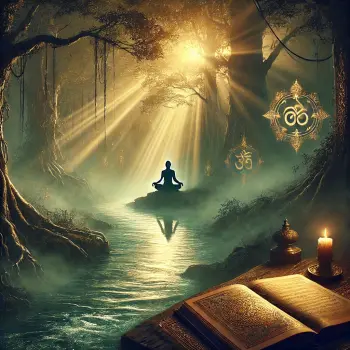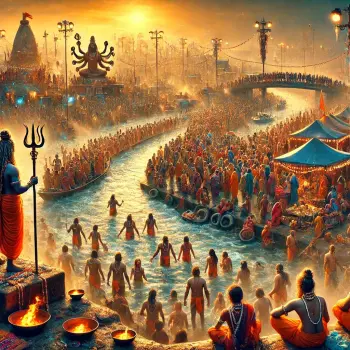
In an age where societal norms no longer dictate the course of marriage, where divorce no longer carries the stigma it once did, and where individual choice reigns supreme, relationships are undergoing a quiet revolution. What binds two people together today is no longer economic need or cultural pressure—but emotional connection. And this is precisely where the ancient wisdom of the Bhagavad Gita offers timeless guidance.
Social Glue is Gone. What Now?
It can be argued that the emotional challenges in modern relationships aren’t because people have become less capable, but because the external glue has dissolved. The Gita, composed millennia ago, understood this fundamental truth: external circumstances may fluctuate, but inner mastery is what determines lasting peace—and, by extension, lasting love.
In Chapter 2, verse 55, Krishna describes the sthitaprajna, one who remains steady in wisdom:
“One who is not disturbed by the incessant flow of desires—that enter like rivers into the ocean, which is ever being filled but is always still—can alone achieve peace.”
In a relationship, this means emotional regulation, self-awareness, and inner calm are the true foundation stones of love.
The Gita’s Model of Emotional Intelligence
While modern science now uses advanced tools to track micro-emotions and physiological stress, the Gita explored this terrain through a philosophical and spiritual lens:
-
Self-awareness (Atma-jñāna): Knowing oneself—our fears, attachments, and expectations—is the first step to a conscious relationship.
-
Self-regulation (Indriya-nigraha): Controlling one’s impulses, speech, and reactions is repeatedly emphasized in the Gita.
-
Empathy (Samatva): Seeing the divine in the other, treating them with compassion and equanimity, especially when conflict arises.
-
Detachment (Anāsakti): Not clinging to expectations or outcomes in a relationship, but loving freely and responsibly.
-
Purpose-driven living (Dharma): Each relationship must be rooted in dharma—our ethical and spiritual responsibilities to one another.
When Love Becomes Dharma
Krishna teaches Arjuna to act without attachment to the fruits of his actions. In relationships, this translates to loving without constant expectation of return. This isn’t to suggest tolerating abuse or neglect, but rather, cultivating a giving consciousness rather than a transactional mindset.
Too often, emotional pain arises not because our partner fails us—but because our expectations aren’t met. The Gita reminds us:
“You have a right to perform your prescribed duties, but you are not entitled to the fruits of your actions.” (2.47)
Love, then, becomes dharmic when it is offered from a place of spiritual maturity—not neediness.
Roots of Relationship Patterns: Gita and Childhood Samskaras
Modern psychology tells us that childhood emotional conditioning impacts adult relationships. The Gita agrees. Our samskaras (mental impressions)—formed early in life—govern how we perceive, react, and attach. Understanding this can help couples offer more compassion to each other, realizing that not every conflict is personal; many are echoes of unhealed patterns.
Through mindfulness (dhyana yoga) and self-study (svadhyaya), the Gita offers a pathway to cleanse these impressions and enter relationships with greater emotional clarity.
Emotional Maturity Over Social Conformity
In the past, people stayed in relationships out of fear—of judgment, of survival. Today, we must stay out of freedom, and that requires emotional strength. The Gita doesn’t offer shallow advice; it demands the hard work of inner transformation.
A marriage without emotional intelligence is like a chariot without a charioteer. As Krishna guides Arjuna’s chariot, so too must self-awareness guide our emotions. Only then can love endure not because it must, but because it is consciously chosen every day.
Final Thought: The Inner Battlefield of Love
Relationships, like the Kurukshetra battlefield, are not always peaceful. They demand courage, honesty, and spiritual grounding. The Gita does not promise an easy path, but it arms us with wisdom to fight the inner battles—of ego, fear, and attachment—that often sabotage love.
In a world where social scripts no longer dictate the plot, may we all learn to write our own love stories, rooted in dharma and blossoming through emotional wisdom.
















